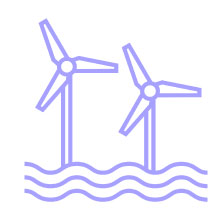Capstone believes material obstacles will prevent the Trump administration from imposing tariffs on foreign films, shielding producers and streamers such as Netflix Inc. (NFLX), Walt Disney Co. (DIS), and Amazon.com Inc. (AMZN). Tariffs are an impractical tool for addressing the exodus of film production—classified as a service—from the US. This recognition, as well as pushback from Hollywood, has prompted the president to back down from his pledge.
- President Trump announced in a May 4th social media post that he has authorized the US Department of Commerce to initiate the process of introducing a 100% tariff on films produced in foreign countries. Since then, however, the White House has struck a more equivocal tone. We believe this largely reflects a recognition of the hurdles that would be involved in implementing such a policy.
- If tariffs are imposed, they would immediately negatively impact producers and streamers with international footprints, including Netflix Inc. (NFLX), Walt Disney Co. (DIS), and Amazon.com Inc. (AMZN). Over the longer term, the potential decline in the number of movies produced would also pose headwinds for exhibitors such as AMC Entertainment Holdings Inc. (AMC).
- We view a Section 232 investigation as the most likely vehicle for pursuing movie tariffs. However, we believe the practical complications and legal risks involved will prevent the administration from following through with Trump’s proposal.
Trump Proposes Tariffs on Foreign Films
On May 4th, President Trump posted on social media that he has authorized the Commerce Department to “begin the process of instituting a 100% tariff on any and all movies coming into our country that are produced in foreign lands.” The post stirred significant confusion in the movie industry regarding how this tariff would be designed and implemented. Trump has yet to sign an executive order effectuating his statements on social media, and has walked back the idea that his administration will definitely impose tariffs with statements that he wants “to make sure [Hollywood is] happy with it, because we’re all about jobs.” The White House also told the Hollywood Reporter that “although no final decisions on foreign film tariffs have been made, the administration is exploring all options to deliver on President Trump’s directive to safeguard our country’s national and economic security while Making Hollywood Great Again.”
Trump posted about his foreign film tariff proposal shortly after meeting with actor Jon Voight, one of three Special Ambassadors to Hollywood. Voight shared a series of actions the Trump administration could take to “Make Hollywood Great Again,” including a tariff on US companies making a movie abroad that “could have been produced in the US” equal to 120% of the value of the foreign incentive received. The proposal also includes a new federal production incentive, which would stack on top of available state incentives; however, Capstone does not expect subsidizing Hollywood to gain traction with the administration or congressional Republicans.
In this note, we unpack the shortfalls of Trump’s proposed tariff and the outlook for tariff implementation.
Tariff Implementation Would Be Structurally Complicated and Legally Dubious
In his post, Trump indicated that the Commerce Department would lead the charge on establishing a tariff on foreign films. Given the department’s authority to conduct Section 232 investigations into imports threatening national security, Capstone believes this indicates the administration would likely use Section 232 authority to implement them. However, we believe introducing a tariff on foreign films would be highly challenging.
First, there are strong arguments as to why films are services (services are not subject to tariffs) rather than goods. Most foreign films enter the US digitally, rather than as rolls of film or on hard drives that physically cross the US border and pass through US Customs and Border Protection (CBP) with a Harmonized Tariff Schedule (HTS) code. The industry practice of digitally transferring, rather than physically shipping, produced films would make it exceptionally challenging for CBP to enforce any tariff measures. Assessing the value of film scenes produced abroad, which theoretically is what a tariff would apply to, would also be extremely difficult and further complicate the issue.
Notably, the Trump administration’s universal 10% tariff on US imports does not cover foreign films. Amendments made in 1989 and 1994 to the International Emergency Economic Powers Act (IEEPA), the statute used to introduce the universal tariff, explicitly bar the president from using it to regulate or prohibit the importation or exportation of films. The amendments were designed to ensure IEEPA would not restrict information or information materials, including intangible items such as television broadcasts.
Second, any tariff actions taken under Section 232 must be justified by national security concerns. Capstone believes claims that foreign films threaten US national security would make any tariff action ripe for legal challenges, with plaintiffs likely to make a strong argument that it exceeds the statutory authority. A successful legal challenge could put other tariffs Trump has introduced using Section 232 authority at risk. We believe the administration will be cautious to avoid creating a situation where lawsuits could successfully undermine the statutory authority underpinning its product-specific tariffs.
The administration could instead instruct the US Trade Representative (USTR) to conduct a Section 301 investigation into foreign film production (see Exhibit 1). Section 301 of the Trade Act of 1974 gives the USTR the authority to investigate and take action against foreign practices deemed unfair or detrimental to US commerce. However, many of the same implementation issues would apply, and the USTR has previously rejected calls for a Section 301 investigation into the film industry. In 2007, the Film and Television Action Committee (FTAC) filed a Section 301 petition regarding Canadian film subsidies, arguing that these subsidies violate Canada’s obligations under the World Trade Organization (WTO) and requested that USTR initiate a WTO dispute. The interagency committee that reviewed the petition unanimously recommended that USTR not accept the petition based on the economic data and legal arguments. Similar concerns could prevent a present-day investigation from being successful.
Exhibit 1: Trade Statutes Trump Could Use to Impose Tariffs on Foreign Films
| Trade Statute | Justification | Process & Timing | Examples |
|---|---|---|---|
| Section 232 | Section 232 of the Trade Expansion Act of 1962 gives the president the authority to restrict imports if they threaten national security. | The Commerce Department investigates whether imports of specific goods threaten national security. The agency must complete its investigation in 270 days, and then the president has 90 days to decide whether to act to address the threat. | During his first term, Trump introduced a 25% Section 232 tariff on steel imports following a Commerce Department report detailing how these goods posed a national security threat. |
| Section 301 | Section 301 of the Trade Act of 1974 gives the president the authority to impose tariffs or trade restrictions on countries engaging in foreign trade practices deemed unfair, unreasonable, or discriminatory. | The US Trade Representative examines whether foreign trade practices burden or restrict US commerce in an investigation that can be self-initiated or prompted by a petition from US industry. This investigation can take up to one year. | The first Trump administration introduced tariffs on over $350 billion of Chinese imports following an affirmative Section 301 investigation into Chinese trade practices. |
| IEEPA | IEEPA grants the president the authority to regulate a variety of economic transactions during a declared national emergency. | The president declares a national emergency to invoke the powers granted under IEEPA. | Trump is the first president to use IEEPA to introduce tariffs. Previous presidents have used IEEPA to impose sanctions. |
Source: USTR, Capstone analysis
While our analysis thus far has focused on potential tariffs given Trump’s social media post, we note that the president could take a range of actions beyond tariffs in response to an affirmative Section 232 or Section 301 investigation. One option is to introduce quotas restricting the number of films produced in foreign countries, although this is complicated by enforcement challenges in regulating streamers and defining a foreign film.
Other countries have introduced mechanisms to regulate foreign films, sometimes to boost domestic film production. Canada, for example, requires that broadcasters (including streaming services) produce and showcase a certain percentage of Canadian content. In a different approach, the Chinese government maintains an official quota of 34 foreign revenue-sharing films it releases per year. State ownership of China’s film importers and distributors allows this quota to be enforced in a way that would be extremely complicated to replicate in the US.
US studios have shifted their production outside of the US in recent years in response to a range of factors, including the generous rebate programs offered by other countries, US labor strikes, and the Los Angeles wildfires. Countries including Canada, Australia, the UK, New Zealand, and Hungary offer more attractive rebates than the US, incentivizing film production. In the US, film production incentives are limited, offered on a state-by-state basis, and rarely rival those offered by other countries.
What’s Next
If the Trump administration initiates a Section 232 investigation into foreign films, the Commerce Department would have 270 days to complete the investigation before delivering a report to the president.
Read more from Andrew:
Section 232 Could Sink US Port Revenues
President Trump’s Tariffs Have Shocked the World. What Now?
The Rules of Trump’s Trade War




























